Do Microplastics Accumulate in Killer Whales?
Do Microplastics Accumulate In Killer Whales?
Studying small plastics in big animals

The large marine animals of our coasts have been central to Canadian and Indigenous culture and identity for generations, but these animals face many human-induced threats.
Dr. Juan José Alava, Research Associate at the Institute of Oceans and Fisheries of the University of British Columbia and Principal Investigator of UBC’s Ocean Pollution Research Unit (OPRU), explains that the concept of “microplastics” first appeared in scientific research papers in 2004 by Dr. Thompson and team. In less than 2 decades microplastic research has ramped up. Scientists have discovered that microplastics are everywhere, in Arctic ice and deep seas. There are an estimated 5.25 trillion particles floating at the ocean surface, close to 2 million plastic pieces per square meter on the ocean seabed, and an estimated average of 8 million tons of plastic released from most coastal countries of the world into the ocean each year, but there is still much we do not know about this emerging pollutant.
These tiny plastic particles may not seem like a threat to the likes of large killer whales, but research has shown that some contaminants can build up in the diet of top predators.
In the case of microplastics, this is a question we still need to answer. Are microplastics threatening our beloved megafauna, our large marine life?
Luckily, Dr. Alava and his team of students are charging forward to find out if top predators are impacted by microplastics. His research group studies the interaction of many ocean pollutants, including persistent organic pollutants (POPs), mercury and microplastics, and their pathways through ocean food webs.
Dr. Alava explains: “The question is whether or not microplastic ingestion in low trophic levels can build up in higher trophic levels.”
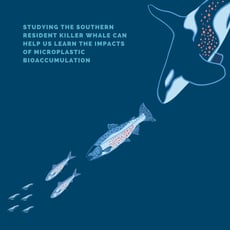
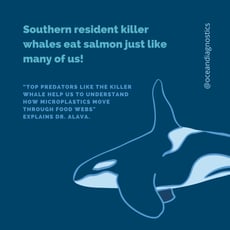

Dr. Alava and his team study the southern resident killer whale to determine whether microplastics "bioaccumulate" or "biomagnify" in high trophic level species.
Top predators, or apex predators, like the southern resident killer whale, are high trophic level species, which means they are at the top of the food web.
“Trophic level” is essentially a species’ rank in the food web. If a species has a high trophic level, they are at the top and have few predators, if any. For example, southern resident killer whales have a higher trophic level than the salmon they eat. Salmon have a higher trophic level than the herring they eat. Herring have a higher trophic level than the zooplankton they eat, and so on.
When a high trophic level species eats species lower in the food web, they have the potential to accumulate chemical contaminants that their prey consumed.
This is the concept of “bioaccumulation” and “biomagnification.”
“Bioaccumulation” occurs when the concentration of a chemical contaminant gradually increases in an animal over time as they continue to live in a contaminated environment. Pollutant concentrations inside the body become higher than what is in their habitat (water, sediment and food).
“Biomagnification," on the other hand, takes place when the concentration of a chemical contaminant increases at each trophic level in the food web with the highest concentrations found in top or apex predators.
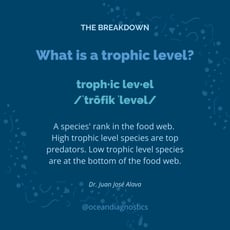
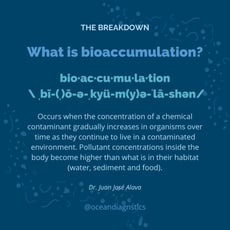

The southern resident killer whale faces several human-induced threats, including climate change stressors, food depletion, chemical pollutants and more. It is important to understand what level of microplastics they ingest to find out if microplastics harm their health and increase their vulnerability to other stress in the environment.
“We use sentinel species to tell the story of microplastic pollution in the oceans. These species can tell us whether microplastics accumulate in the food web because they are at the top of these food webs,” explains Dr. Alava.
Of course, using sentinel or endangered species can make researching stomach contents difficult due to ethical concerns and logistical issues. We cannot take these animals from the environment to study them. Instead, we must rely on what’s called bioaccumulation and biomagnification modelling.
Dr. Alava uses models, mathematic calculations, to estimate how much bioaccumulation or/and biomagification occurs in the diet of the southern resident killer whale and other key species. He then uses evidence from animals collected in the field, typically animals found stranded, stomach contents, or prey and poop to compare how much microplastics they have in their stomach and the model’s estimation.
“All models are wrong,” he notes, “but they can help us to simulate potential bioaccumulation.”
It is important to mention that all species have different food preferences. The southern resident killer whale, for example, enjoys Chinook salmon off British Columbia’s coast. Chinook salmon, feed on small fish like herring and herring feed on zooplankton.
If zooplankton ingest microplastics, do those microplastics make their way to the southern resident killer whales? If so, in what quantity?
These questions depend largely on “retention time”, the amount of time microplastics stay in an animal's gastrointestinal tract before it is eliminated, Dr. Alava explains. If animals can quickly eliminate microplastics, bioaccumulation or biomagnification is less likely.
A recent paper established microplastics in human blood. If microplastics move through cell membranes and tissues and into the bloodstream, elimination may be more difficult. These particles may accumulate in human body tissues long-term.
“Microplastics don’t belong in the oceans. We are introducing something that is artificial and strange. We are changing the biochemistry of the ocean,” notes Dr. Alava.
Scientists are still trying to understand the impacts of microplastics on organisms, some impacts include cuts, reduced growth, animals feeling full when they are merely full of non-nutritional plastic and more.
Microplastics’ impact on the environment is not limited to harm to species. The ocean plays a huge part in capturing carbon dioxide from the atmosphere and microplastics may alter this cycle.
There are processes involving phytoplankton and zooplankton that play a key role in removing carbon dioxide from the surface layer of water and sinking it into the deep seas, where it will remain there for a long time.
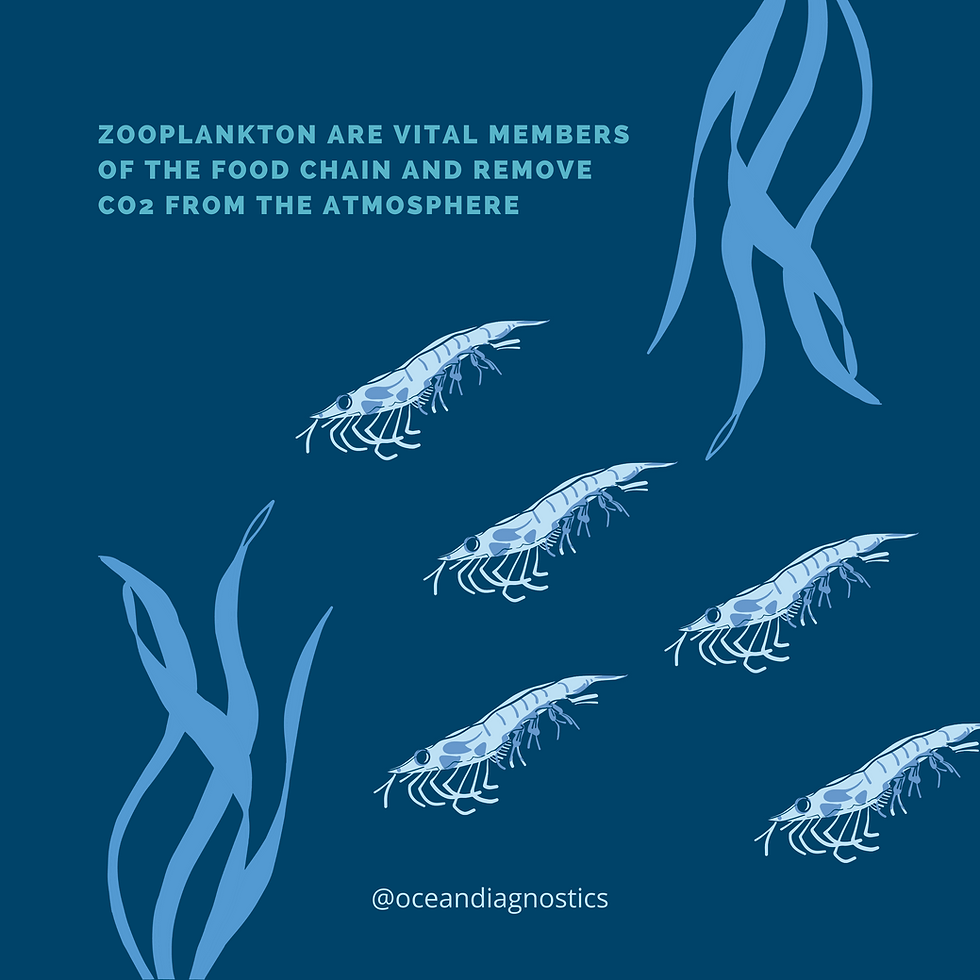
Dr. Alava explains that microplastics may change this process. They may impact phytoplankton and zooplankton health due to toxic effects, changing the weight of zooplankton fecal matter and therefore the ‘biological carbon pump flux, which contributes to carbon sinking into the depths of the ocean.
Microplastics are not natural to the ocean. In a world where marine animals face several stressors due to climate changes and chemical contaminants, it is important to assess all threats.
Dr. Alava discusses microplastics in the context of “cumulative stressors,” the idea climate change, chemical contaminants and microplastics can build on each other and make an animal weaker and more vulnerable to other threats.
“Microplastics are part of a much bigger problem, plastics and anthropogenic climate change generated from fossil fuel consumption. We live in the Age of Plastics (“Plasticene”), where people depend on plastics. As long as there is plastic demand, there will be plastic supply,” notes Dr. Alava.
There are several issues with plastic pollution. For one, plastic is made of carbon and contributes to our carbon footprint.
Dr. Alava advocates that we need to change our relationship with plastic. He notes that we cannot rely on top-down solutions. We need to consider perceptions of local people and Indigenous groups/coastal First Nation communities.
“Our western way of thinking is to take things away from the earth and make things to sell; we can learn from other cultures,” he says.
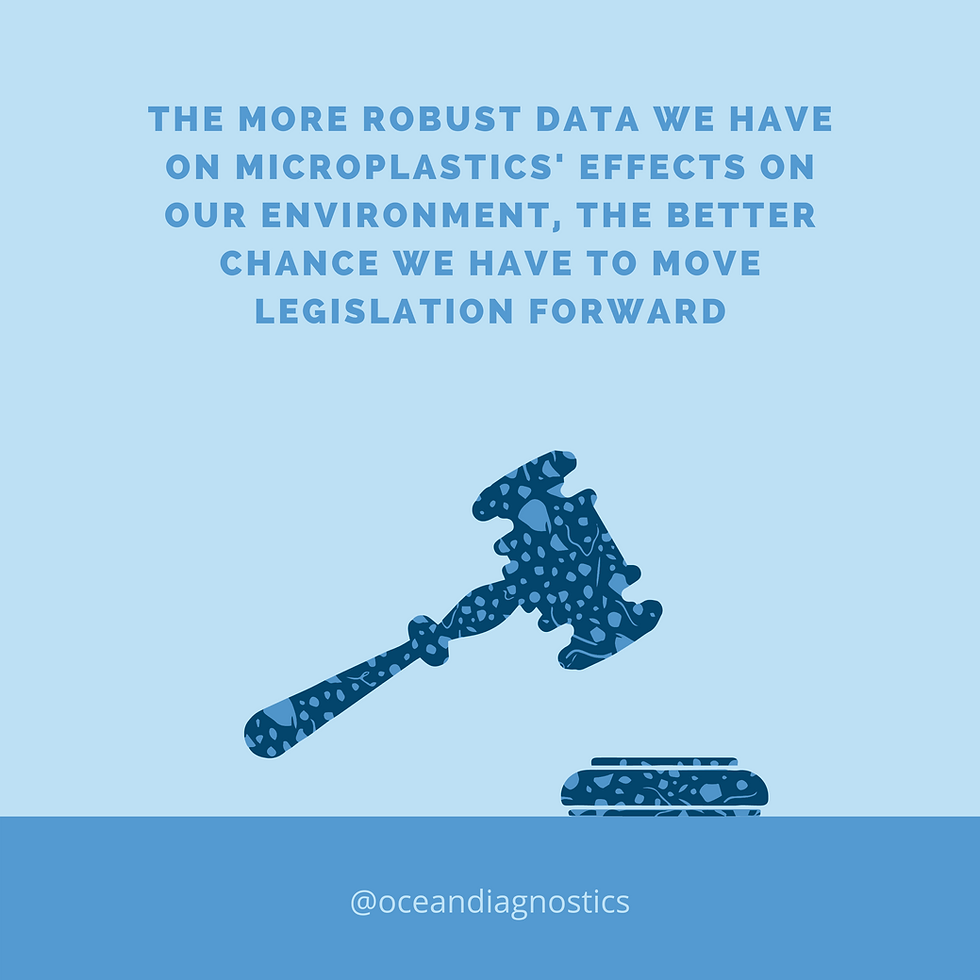
There are multiple different levels of intervention needed, including individual, provincial, federal and global. Citizens can choose to consume products with less plastic. Legislation can be created to move towards a circular plastic economy, if feasible (it may not be a feasible or equitable approach in the most impacted developing nations, remote oceanic-coastal communities and Small Islands Developing States who face ocean plastic pollution). If we want healthy oceans, we must look for solutions and stop overproducing plastics.
“The decisions we make today will have an impact on the future, and the science is important,” says Dr. Alava, “If we can make a difference today at the household and individual levels, and reduce the plastic footprint in our oceans, maybe we can reduce some of the risks of plastic which add pressure to the ocean environment.”
“The decisions we make today will have an impact on the future, and the science is important,” says Dr. Alava, “If we can make a difference today at the household and individual levels, and reduce the plastic footprint in our oceans, maybe we can reduce some of the risks of plastic which add pressure to the ocean environment.”
Dr. Alava and his team study pollutants in other countries as well, including in his country of birth, Ecuador, where he has studied ocean pollution in relation to Galápagos sea lions, the Gulf of Guayaquil’s bottlenose dolphins and, currently, microplastics in the food web of the Galápagos Penguin (a master's research project proposed and led by his graduate student, Karly McMullen, at Institute of Oceans and Fisheries, University of British Columbia).
He is motivated to push microplastics research forward and help these charismatic species at the same time.
“Science can be used to save the world, not just answer questions,” Dr. Alava claims.
Dr. Alava assesses marine pollution exposure, risks, bioaccumulation and biomagnification to inspire science-based solutions and prevent further ocean pollution from occurring.
He is passionate about pushing microplastics science forward and exploring bioaccumulation and biomagnification to understand how our charismatic and loved ocean stakeholders, like southern resident killer whales, sea otters and Galápagos penguins will cope with the ever-increasing amount of microplastics in the oceans.
Follow his lab on Twitter (@UBC_OPRU) and stay tuned for the latest microplastics bioaccumulation and biomagnification news!
Ocean Diagnostics Inc is an environmental impact company that develops technologies and laboratory capabilities to standardize microplastics data collection and analysis. The company works closely with academic and government partners to advance microplastic science. ODI has partnered with Environment and Climate Change Canada to share information on plastic pollution from Canadian plastic experts.
Learn more here.
Follow #BeatPlasticPollution for the latest news.
